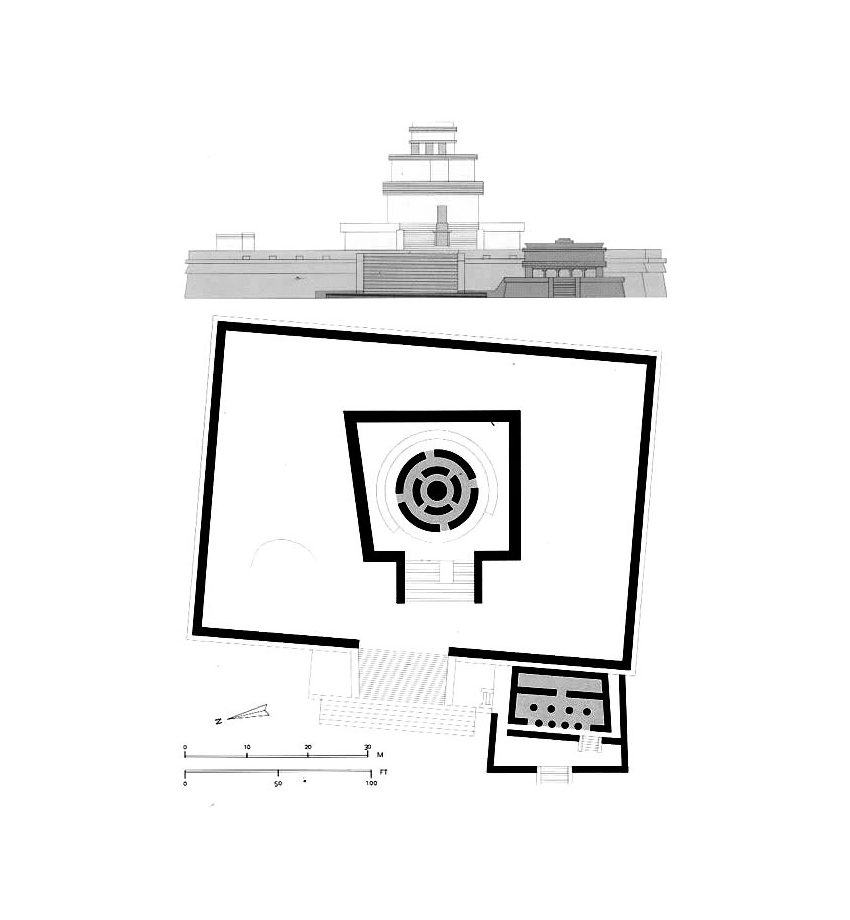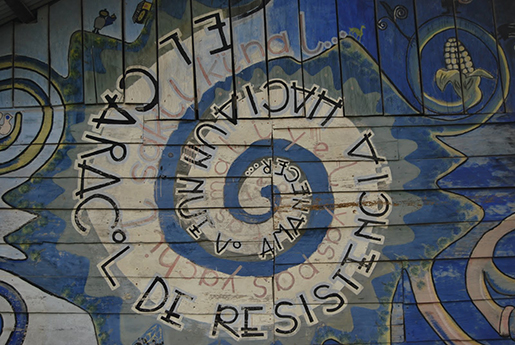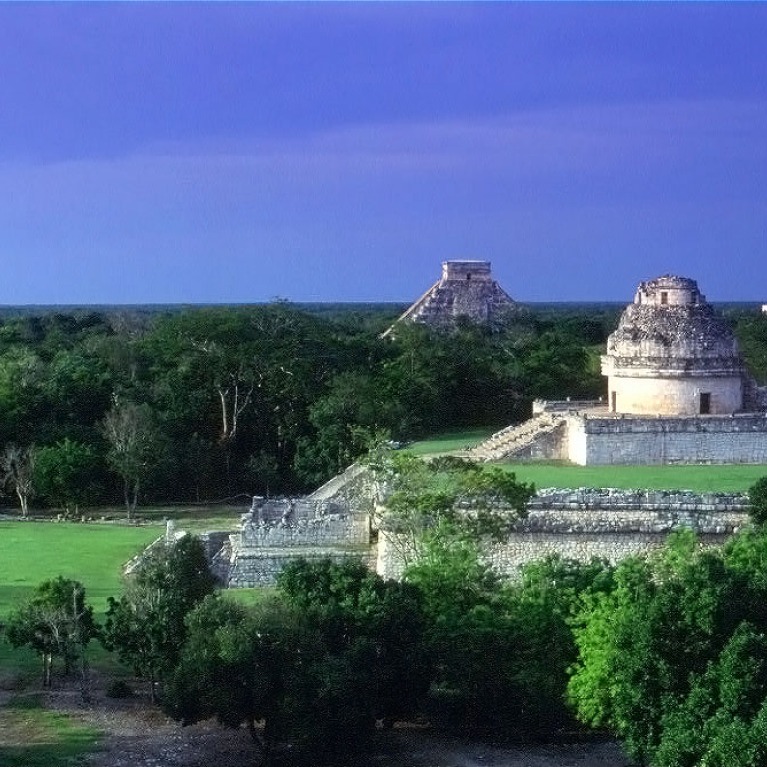Every year millions of tourists visit the Mayan Riviera, in the Mexican Caribbean. I, like many others, couldn’t miss the opportunity to ‘discover’ the complex of Chichén Itzá, the great pyramid erected in the middle of the Yucatan jungle in honour of Kukilkan.
This pyramid rises in the middle of the jungle accompanied by, among other structures, the Observatory Building. This is one of the most important structures in Mayan culture and its original construction dates from 800 AD. It’s a unique circular structure whose function was the study of astronomy. It’s composed of various rectangular platforms on which a tower is strategically located off-centre.
It’s made up of three cylindrical concentric forms, along with various galleries and a spiral staircase that leads to the observation chamber. This is why it’s popularly known as The Snail. Its meaning is closely linked with the ‘sky-earth’ connection. It’s therefore a spiral, a flat form conceived in two dimensions that is vertically extended at one end, acquiring the third dimension. And so it projects itself into the cosmos.

Mayan Observatory. Floor plan and elevation.
There is strong evidence that the Mayans had extensive knowledge of astronomy, mathematics and medicine as well as a strong devotion to the universe. The creation of one of the most precise solar calendars until the modern era, a total understanding of the tides through moon cycles. In short, constant observation and great precision in measuring time. All of this facilitated their own survival as an agrarian society.
The ‘Greeks’ of the Americas, developed a complex system of writing based on codices and a number system based on the number twenty, and were ahead of their contemporaries in introducing zero, represented by the glyph of a snail which represented innovation and agility.

Mayan Codex.
I always find some fascinating ‘story’ about the Mayan World. Sadly, the movie industry has tried to satanise its legacy with confusing messages of catastrophes and savagery. But reality always exceeds fiction and, unfortunately, it’s difficult today to find heirs of that Empire. The Spanish Conquest was responsible for doing away with a good number of them.
Today there are around 4 million of them who reside in the Yucatan, in the Lacandona Jungle (Chiapas) and in northern Guatemala, along the Uzumacinta River. Fertile lands rich in natural resources. Always in ‘magical’ places. In some cases they are isolated, displaced, monitored and even subjugated by landowners and even by neo-liberalism itself. Labeled as terrorists only for being rooted in the land they love. Living in hiding in the mountains is the price they pay for disobedience and rebellion.
The moment changes, but not the place. The snail appears again in the heart of Chiapas built this time by the Zapatistas to house a small community and celebrate their national convention in 1995.
They chose two points in the region. One would serve as a meeting centre, library and possibly an entrance to the community; the other extreme would be the security checkpoint and the administrative centre. In the internal galleries, you can find different living areas constructed in apparent chaos, but that are always molded to the topography of the place. Other independent structures such as the auditorium, a car park or guest houses provide additional services. The snail strategy as a model of solidarity and land management. The ethics of the search instead of destruction.
At the end of 1994 the finishing touches were made. A few months later the Army arrived and destroyed the library and the security centre first. Then they destroyed everything else. That day the Aguascalientes snail died but thanks to the talent of the indigenous people that built it there are many others located around Chiapas.

Center management.
In the end, I’m left with the confusion the structure itself creates. Where is the beginning and the end of the snail?
TO BE CONTINUED... NEXT WEEK MORE!! > "THE CITY, PETER, AND HIS SYNDROME"
IN TREATMENT - METALOCUS
DIRECTOR: JOSÉ JUAN BARBA. COORDINACIÓN: INÉS LALUETA. ORGANIZACIÓN: INÉS LALUETA, PEDRO NAVARRO. VERSIÓN INGLÉS: KAREN SIMPSON. INVITADOS 1ª TEMPORADA: JOSÉ JUAN BARBA, MARINA DIEZ-CASCÓN, SERGIO DIEZ-CASCÓN SOLER, LARA FERNÁNDEZ GONZÁLEZ, CARLOS GERHARD PI-SUÑER, MONTSE PLA GARCÍA-CASTANY, XAVIER NICOLAU CUYÀS, FERNANDO RIAL PONCE, VERÓNICA ROSERO.























